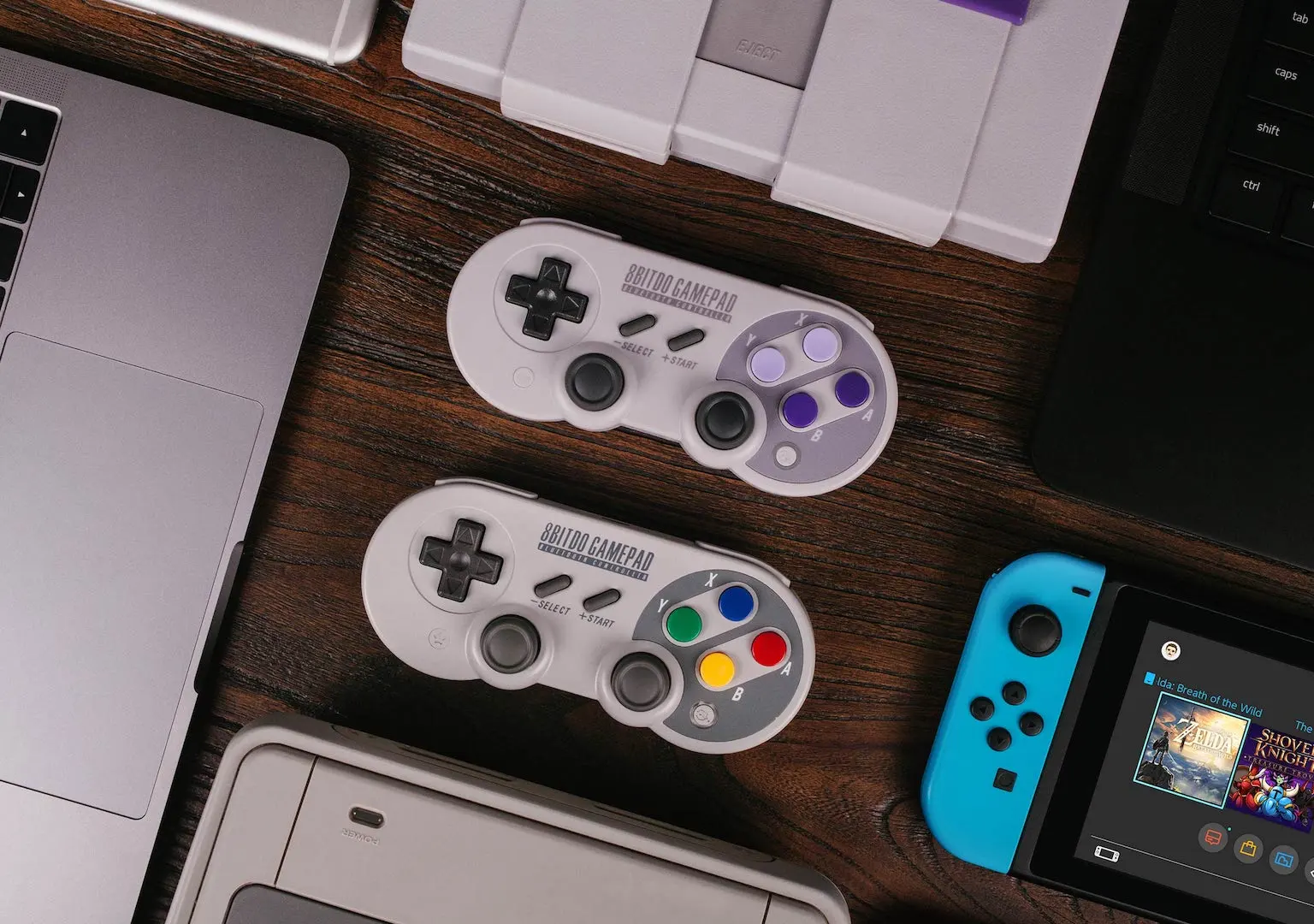8-Bit to 64-Bit: Witness the Epic Evolution of Retro Games in 2024!
Welcome to the wild world of retro gaming! Have you ever wondered how your favorite pixelated heroes of yesterday evolved into the stunning visuals of today? In 2024, we stand on the shoulders of gaming giants—console heroes that walked so our virtual worlds could run! Let’s embark on an exhilarating journey through gaming history, from the charmingly simple worlds of 8-bit games to the era-defining 64-bit classics. Along the way, we’ll uncover lesser-known facts, legendary milestones, and perhaps spark a nostalgic smile or two. So grab a joystick, because here we go—it’s game on!
The Birth of 8-Bit Games: Where it All Began
I remember the first time I held an 8-bit gaming console, a chunky little thing that somehow felt magical. My brother had just bought home a second-hand NES, and we plugged it into our TV the size of a small fridge. That tiny device opened a portal to worlds I never knew could fit into a cartridge, no bigger than a candy bar. It's crazy to think that those chiptunes and blocky graphics had such a profound impact on our lives.
The origins of 8-bit games date back to the late '70s and early '80s, with Atari jumping into the fray and, soon after, Nintendo and Sega. These companies defined an era. That's when Super Mario Bros. and The Legend of Zelda began their legendary careers. Sure, Pac-Man wasn’t technically 8-bit, but it laid the groundwork. Oh man, the excitement of those simplistic yet challenging levels!
What made 8-bit graphics so iconic was their simplicity paired with creativity. Designers had to work within those pixel constraints, and boy, did they make magic. The limited palette didn't hold back anyone; instead, it unleashed a flood of creativity. Just imagine, it takes a meager 256 pixels (yep, a mere 256!) to bring vibrant worlds to life.
Transitioning to 16-Bit: More Than Just Pixels
Jumping to the 16-bit era was like going from black-and-white TV to technicolor. Suddenly, Sonic the Hedgehog zipped onto our screens with more colors and a pace that kept our hearts racing. The Sega Genesis and SNES were the powerhouses leading the charge, delivering an all-new experience.
It wasn't just about the graphics getting a boost; the whole gaming experience felt richer. Storytelling took a front seat with titles like Final Fantasy VI, where I found myself genuinely caring about the characters amid an epic quest. Besides, the music! Oh, the tunes of Streets of Rage are still stuck in many heads to this day. Programming was becoming a narrative craft.
More than just enhancing visuals, 16-bit games expanded on gameplay mechanics. New genres flourished, complex RPGs, and mind-boggling puzzles. Sure, there were times when I'd curse a tricky Mega Man level, but the satisfaction of overcoming those challenges was unbeatable.
Entering the 32-Bit Realm: Toward Realism
When the gaming world took the leap to 32-bit, it felt like the future had arrived. Sony's PlayStation and Sega Saturn were leading this new revolution. I felt like Rudy Ruettiger running onto the Notre Dame field every time I fired up Tomb Raider for the first time. The graphics were almost realistic!
In this era, landmark titles emerged, like the iconic Final Fantasy VII, with mind-blowing storytelling and cinematic sequences. And let’s not forget Crash Bandicoot, spinning and smashing crates in glorious detail. Games began integrating 3D graphics, forever changing the visual landscape.
While 3D graphics might seem crude by today’s standards, back then, it was like stepping into uncharted territory. The seeds planted during this era have grown into the immersive worlds we explore today, where realism is unmatched.
The Era of 64-Bit Classics: A Legend is Born
Moving into 64-bit was like stepping into an almost tangible world. Thanks in large part to the Nintendo 64, with its famous controller that fits just about right, games got smoother, more engaging, and talking about GoldenEye 007 is practically a rite of passage over here. Those endless multiplayer sessions were legendary.
64-bit games gave birth to 3D platformers like Super Mario 64, where Mario could leap in three whole dimensions. And don’t get me started on The Legend of Zelda: Ocarina of Time. It wasn’t just about the pixels anymore—storytelling, graphics, and gameplay were meeting somewhere beautiful.
These games laid the cornerstone for what modern gaming would become. They offered an unforgettable blend of adventure and emotion, setting the precedent for what gamers expected from future titles.
The 64-Bit Legacy in 2024: Why We Still Love Retro Games
Fast forward to 2024, and the 64-bit era is still very much alive in our hearts. There's just something about retro games that keeps them in a sacred corner. Maybe it’s the nostalgia or the simplistic joy they bring.
Modern consoles try to tap into this feeling and succeed pretty well. Platforms like the Nintendo Switch offer a selection of classic games with new twists. There’s an undeniable charm in these older games that leave us yearning for more.
Nostalgia's a powerful thing; it can even influence new developments. Today’s game designers often draw inspiration from the past, blending retro aesthetics with modern elements to create fresh experiences. It's that lovely blend of old and new that makes gaming so fascinating today.
Conclusion
Retro games have enticed and entertained generations of gamers, evolving from humble 8-bit beginnings to the dazzling 64-bit classics that we revere today. It's a testament to the relentless pursuit of innovation and creativity within the gaming industry. As we celebrate this fascinating evolution in 2024, let's continue to cherish the nostalgic gems and welcome the thrilling innovations that lie ahead. Ready to hit play? Embrace the past, savor the present, and game on!



